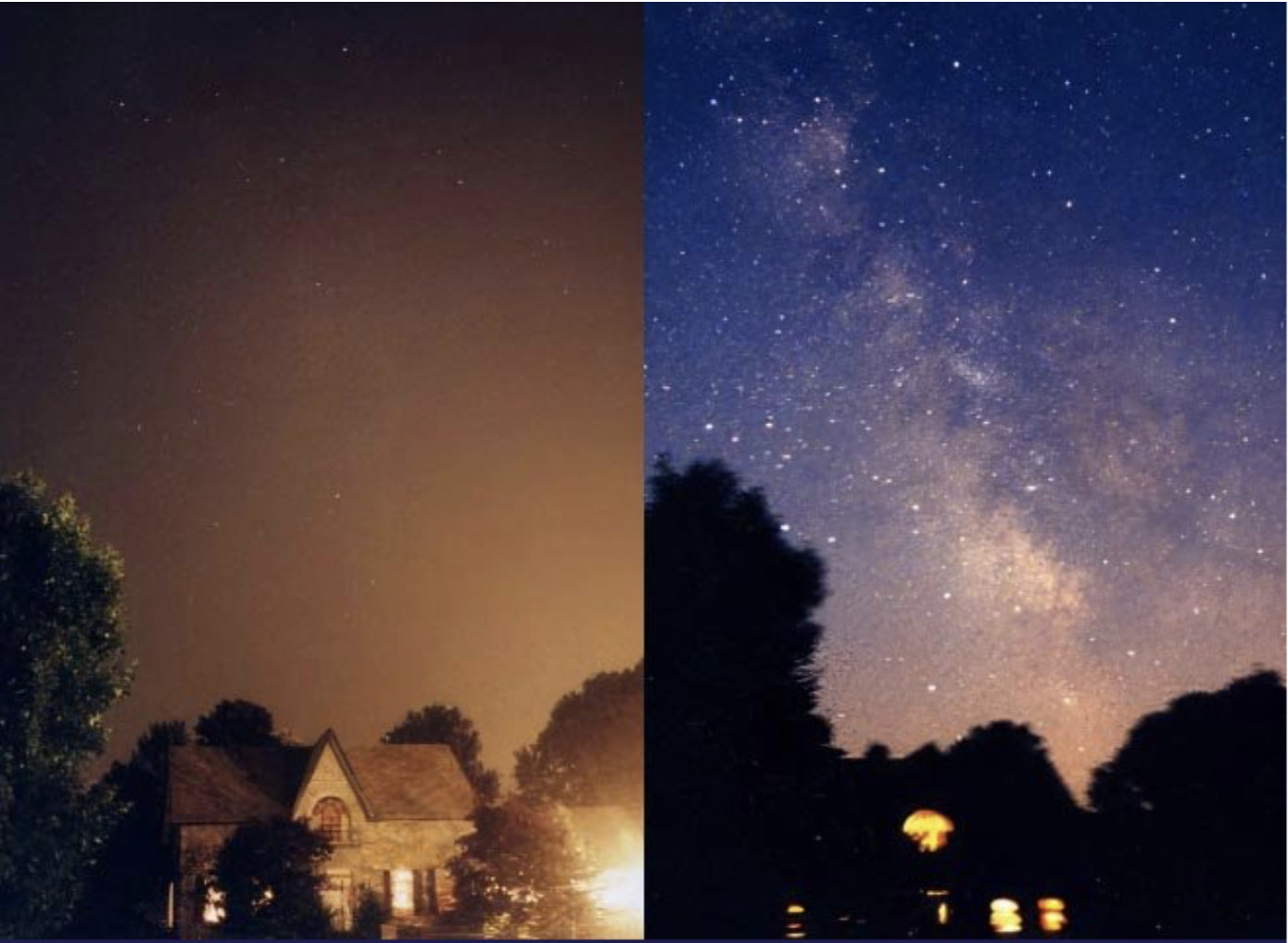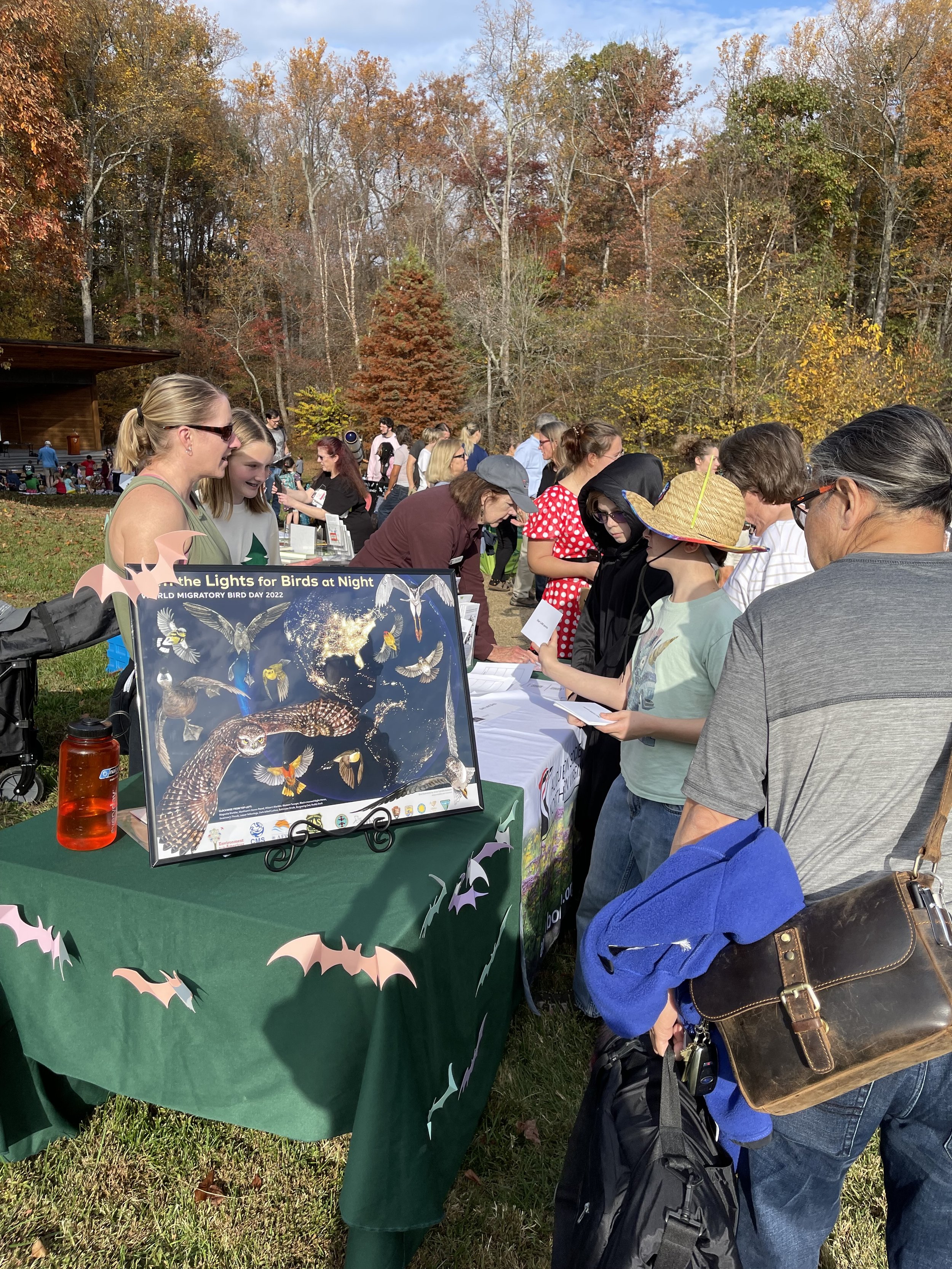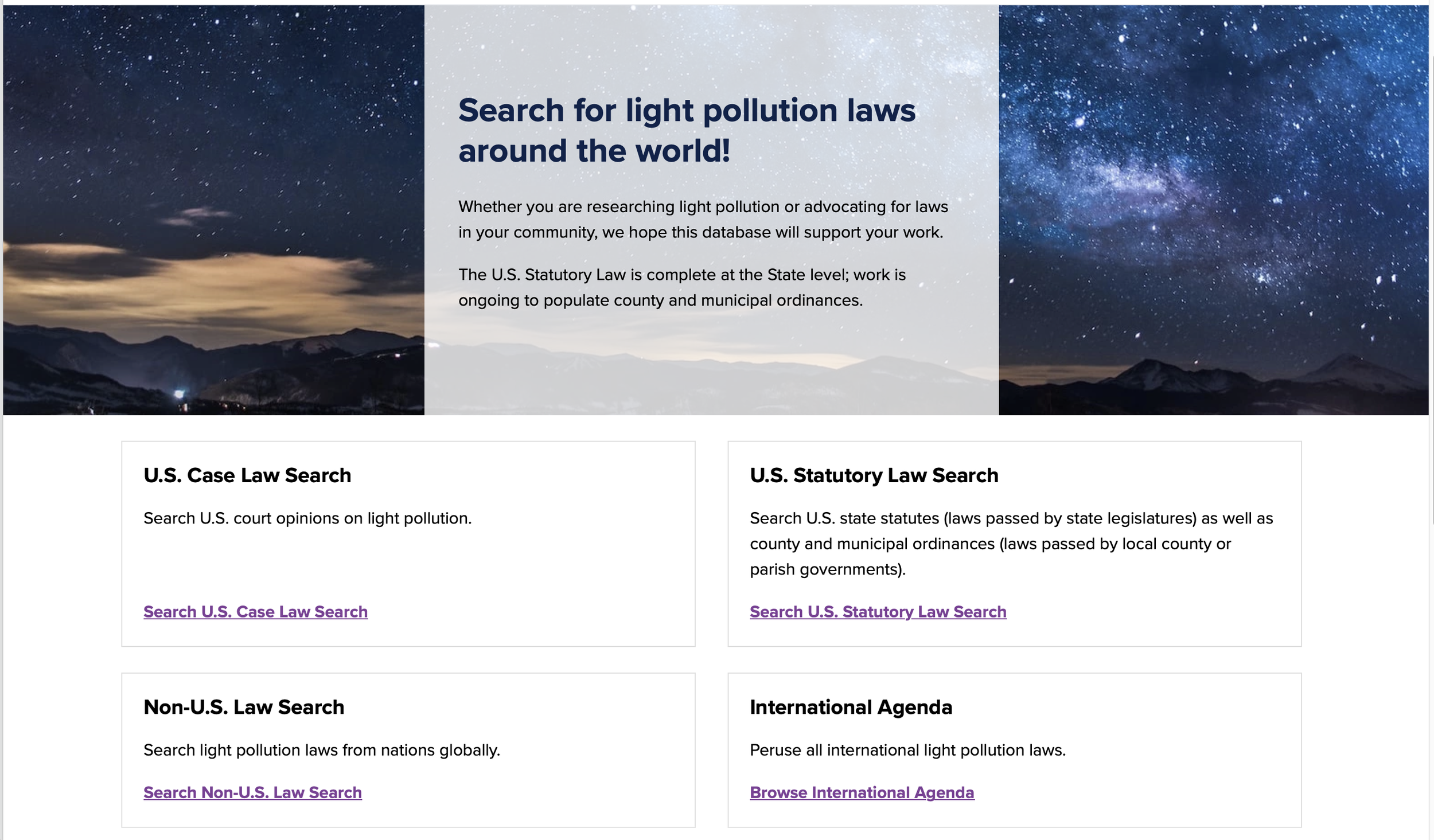
What is Light Pollution
Light pollution is the human-made alteration of outdoor light levels from those occurring naturally.
When we over-light, fail to use shields, timers and sensors, or use the wrong color of light, we can negatively affect many parts of our world, including migratory birds, pollinators, sea turtles, and mammals, including humans.
All artificial light technically is light pollution.
Light can be a pollutant
Most of us are familiar with air pollution, water pollution, and land pollution, but did you know that light can also be a pollutant?
Components of light pollution include:
Glare — excessive brightness that causes visual discomfort
Sky glow — brightening of the night sky over inhabited areas
Light trespass — light falling where it is not intended or needed
Clutter — bright, confusing, and excessive groupings of light sources
What causes light pollution?
Light pollution is a side effect of industrial civilization.
Light pollution is the result of bad lighting: Unshielded, Misaimed, Too Bright, Too White, On all Night!
Bad lighting is the result of human behavior and that behavior can be changed.
Its sources include building exterior and interior lighting, advertising, commercial properties, offices, factories, streetlights, and illuminated sporting venues.
For a deeper dive into Dark Sky Approved Outdoor Sports Lighting watch the presentation below and read Outdoor Sports Lighting Can Be Dark Sky Friendly: Here’s How
Residential lighting is an increasing and rapidly growing problem particularly when it comes to neighbors’ lighting.
The DarkSky Approved Outdoor Sports Lighting Program sets the standard for neighborhood-friendly outdoor sports lighting. These athletic fields exhibit what is possible through advances in lighting technology. This event, hosted on March 6, 2024, featured Brad Schlesselman of Musco Lighting.
Learn more:
The Five Principle of Outdoor Lighting
What are the effects of light pollution?
A growing body of evidence links the brightening night sky directly to measurable negative impacts on:
Take action and get involved
What can be done?
Light pollution affects everyone, human and non-human alike. Fortunately, concern about light pollution is rising dramatically. A growing number of scientists, homeowners, environmental groups, and civic leaders are taking action to restore the natural night.
The good news is that light pollution, unlike many other forms of pollution, is reversible, and each one of us can make a difference! Just being aware that light pollution is a problem is not enough — we need to take action.
We can warm it, and dim it, and aim it down. Keep light out of the sky and put it on the ground!
We learned to be water wise. We can learn to light wisely!
Let's stop wasting light! Light is energy, energy costs money.
Solutions exist. Read more here
Educate yourself on responsible outdoor lighting and the DarkSky Approved programs.
The DarkSky Approved program provides objective, third-party certification for products, designs, and completed projects that minimize glare, reduce light trespass, and don’t pollute the night sky.
Certify your home Dark Sky Friendly and encourage your community (schools, businesses, governments, local and religious organizations) to do the same
Do you know if your home lighting is community and night sky friendly? Follow the steps below to find out.
DarkSky’s Home Lighting Assessment helps you identify problem lighting and solutions that can reduce light pollution. Most people will find that a few simple changes can lead to lighting that is both beautiful and functional, without contributing to excessive light pollution.
Certify your home Dark Sky Friendly
Evaluate each outdoor light on your property using the Five Principles for Responsible Outdoor Lighting below, and complete the home lighting inventory form (PDF).
Improve any of your fixtures that don’t check all five boxes on the home lighting inventory.
Confirm that your luminaires are now dark sky friendly by recording the date that you took any necessary action.
Submit your results via our self-certification form. Then download your Dark Sky Friendly Home certificate.
Talk to your elected officials about light pollution.
Talk to your elected officials about light pollution.
Educate policy makers about the problem.
For information on what has been happening with legislation in Virginia click here
Share the State of the Science report developed by DarkSky International.
As more people become increasingly aware of light pollution, accessible scientific information is imperative for dark sky advocates, community members, and policymakers to combat this growing environmental threat effectively. However, finding accessible information has always been challenging, especially for those looking for a broad overview of current information regarding artificial light at night (ALAN).
The absence of an accessible and comprehensive overview prompted DarkSky to publish the first “Artificial Light At Night: State of The Science” in 2022, summarizing the scientific understanding of light pollution. Each year, we have continued to update this report.
Before drafting the State of The Science report, DarkSky considers thousands of published papers, theses, and articles, including nearly 5,000 pieces of scientific literature listed in the Artificial Light At Night Research Literature Database. Like assembling a jigsaw puzzle, we identify the most relevant pieces, strategically placing them next to others to create a summary that is understandable and useful.
In a sense, we do the hard work for you, creating a summary that clarifies relationships among topics related to light pollution. This ‘big picture’ approach also helps the dark sky community identify holes in the research or topics that have yet to be investigated.
by John Barentine Dark Sky Consulting, LLC
Virginia HOUSE JOINT RESOLUTION NO. 74. Offered January 17, 2024
Designating the week of the new moon in April, in 2024 and in each succeeding year, as International Dark Sky Week in Virginia.














